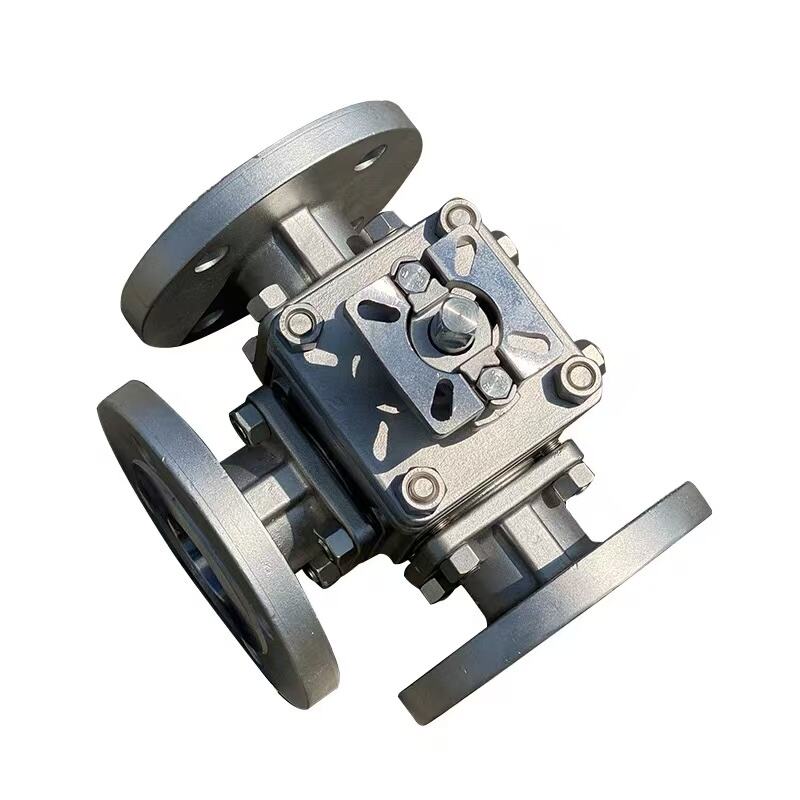Revolutionizing Flow Control Systems with Advanced Valve Technology
The industrial landscape is experiencing a significant transformation with the integration of motorized electric ball valves into modern flow control systems. These innovative devices are redefining efficiency standards and operational excellence across diverse sectors, from water treatment facilities to chemical processing plants. As automation continues to drive industry evolution, the role of motorized electric ball valves becomes increasingly central to achieving precise fluid control and enhanced system performance.
Traditional manual valves are rapidly giving way to their motorized electric counterparts, offering unprecedented levels of accuracy, reliability, and remote operation capabilities. This shift represents more than just a technological upgrade – it's a fundamental change in how industries approach flow control and process automation.
Core Components and Operating Principles
Essential Elements of Modern Electric Ball Valves
At the heart of every motorized electric ball valve lies a sophisticated integration of mechanical and electrical components. The primary elements include a robust ball valve mechanism, an electric actuator, position sensors, and a control interface. The ball component, typically constructed from stainless steel or other corrosion-resistant materials, features a spherical disc with a bore that controls fluid flow when rotated.
The electric actuator serves as the driving force, converting electrical energy into mechanical motion to rotate the ball precisely. Advanced models incorporate feedback systems that continuously monitor valve position and performance, ensuring optimal operation under varying conditions.
Operational Dynamics and Control Mechanisms
The operation of a motorized electric ball valve relies on sophisticated control systems that enable both automated and manual intervention. When activated, the electric motor drives the actuator, which in turn rotates the ball to the desired position. This movement can be precisely controlled to achieve specific flow rates, with many systems offering modulating control for fine-tuned adjustments.
Modern control interfaces often feature digital displays, remote monitoring capabilities, and integration with industrial automation systems. This level of control allows operators to manage multiple valves simultaneously and implement complex flow control strategies with minimal human intervention.
Advanced Features and Technical Benefits
Precision Control and Automation Capabilities
The integration of motorized electric ball valves brings unprecedented precision to flow control operations. These devices can achieve positioning accuracy within fractions of a degree, enabling exact flow rate control that manual valves simply cannot match. The automation capabilities extend to programmable operating sequences, allowing for complex process control and optimization.
Advanced models feature adaptive control algorithms that can automatically adjust to changing process conditions, maintaining optimal performance even as system parameters fluctuate. This self-adjusting capability significantly reduces the need for manual intervention and ensures consistent operation over extended periods.
Enhanced Safety and Monitoring Systems
Safety features integrated into motorized electric ball valves represent a significant advancement over traditional manual systems. Emergency shutdown capabilities, fault detection, and automatic position verification provide multiple layers of protection against system failures. These safety mechanisms can rapidly respond to adverse conditions, preventing equipment damage and potential hazards.
Real-time monitoring systems continuously track valve performance, providing detailed data on operating parameters such as position, torque, and cycle count. This information proves invaluable for predictive maintenance and system optimization, helping to prevent unexpected downtime and extend equipment life.
Industrial Applications and Implementation
Diverse Industry Applications
The versatility of motorized electric ball valves makes them indispensable across numerous industries. In chemical processing, these valves handle corrosive materials while maintaining precise flow control. Water treatment facilities rely on them for accurate chemical dosing and process control. The oil and gas sector utilizes these valves in pipeline systems where reliable remote operation is crucial.
Manufacturing facilities implement motorized electric ball valves in cooling systems, material transfer lines, and process control applications. Their ability to handle various media types and operating conditions makes them ideal for diverse industrial environments.
Integration and System Compatibility
Modern motorized electric ball valves are designed with system integration in mind, featuring standardized communication protocols and interfaces. This compatibility enables seamless integration with existing control systems, SCADA networks, and industrial IoT platforms. The ability to connect these valves to broader automation systems enhances overall plant efficiency and control capabilities.
Installation considerations include proper sizing, power requirements, and environmental factors. Advanced planning ensures optimal performance and reliability, while standardized mounting patterns and connection types facilitate easy replacement and maintenance.
Maintenance and Longevity Considerations
Preventive Maintenance Strategies
Implementing effective maintenance programs is crucial for maximizing the service life of motorized electric ball valves. Regular inspections should focus on actuator performance, seal integrity, and control system functionality. Preventive maintenance schedules typically include lubrication checks, cleaning procedures, and calibration verification.
Documentation of maintenance activities and performance trends helps identify potential issues before they become critical. This proactive approach significantly reduces the risk of unexpected failures and extends equipment life.
Troubleshooting and Support
Modern motorized electric ball valves include diagnostic capabilities that facilitate rapid problem identification and resolution. Common issues such as sticky operation, position errors, or communication faults can often be resolved through built-in troubleshooting procedures. Manufacturer support networks provide additional resources and expertise for more complex problems.
Training programs and documentation ensure maintenance personnel are equipped to handle routine maintenance and basic troubleshooting tasks effectively. This knowledge base is essential for maintaining optimal system performance and minimizing downtime.
Future Trends and Developments
Smart Technology Integration
The future of motorized electric ball valves lies in enhanced smart capabilities and connectivity. Artificial intelligence and machine learning algorithms will enable predictive maintenance and autonomous operation optimization. Integration with digital twin technology will provide unprecedented insights into valve performance and system behavior.
Advanced sensors and communication protocols will further enhance real-time monitoring and control capabilities. These developments will lead to more efficient, reliable, and autonomous operation of industrial processes.
Sustainability and Energy Efficiency
Emerging designs focus on reducing energy consumption and environmental impact. New actuator technologies and control strategies minimize power requirements while maintaining precise control. Materials innovation continues to improve durability and reduce maintenance needs, contributing to overall sustainability goals.
The development of eco-friendly materials and manufacturing processes reflects growing environmental consciousness in industrial equipment design. These advances ensure that future generations of motorized electric ball valves will meet both performance and sustainability requirements.
Frequently Asked Questions
What are the main advantages of using motorized electric ball valves over manual valves?
Motorized electric ball valves offer superior precision control, remote operation capabilities, automated functionality, and enhanced safety features. They provide consistent performance, reduce human error, and enable integration with modern control systems, leading to improved efficiency and reliability in industrial processes.
How often should maintenance be performed on motorized electric ball valves?
Regular maintenance intervals typically range from quarterly to annual inspections, depending on the application and operating conditions. Critical applications may require more frequent checks. Following manufacturer guidelines and monitoring system performance helps determine optimal maintenance schedules.
What factors should be considered when selecting a motorized electric ball valve?
Key considerations include process requirements (flow rates, pressure, temperature), media characteristics, control system compatibility, power availability, environmental conditions, and safety requirements. Additional factors include maintenance accessibility, spare parts availability, and total cost of ownership over the expected service life.


